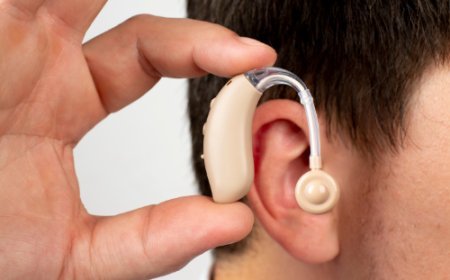Magnetic Beads Protein A in Rapid Isolation Protocols: Enhancing Your Protein Purification Workflow

When you’re working with antibody purification or protein isolation, efficiency and speed are critical. Time is often of the essence, and achieving high purity with minimal effort can significantly streamline your workflow. Magnetic beads Protein A have become a go-to tool for rapidly isolating and purifying antibodies, especially in applications that require high throughput or fast turnaround times. In this article, you will discover how magnetic beads Protein A can enhance your isolation protocols and improve your protein purification processes.
By the end of this post, you will understand how magnetic beads Protein A work, why they’re so effective, and how they can make your purification tasks easier and faster. If you’re looking for an efficient solution to improve your antibody isolation or protein purification, continue reading to learn how this tool can transform your workflow.
Understanding Magnetic Beads Protein A
Magnetic beads Protein A are a type of affinity chromatography resin designed specifically for isolating antibodies. Protein A is a bacterial protein that binds strongly to the Fc region of immunoglobulin G (IgG) antibodies, making it ideal for purifying IgG from complex mixtures such as serum, plasma, or ascitic fluid. When Protein A is conjugated to magnetic beads, the resulting particles offer a fast, efficient, and scalable solution for antibody isolation.
The magnetic nature of these beads is what sets them apart from traditional agarose-based Protein A resins. By using a magnetic field, you can quickly separate the beads from your sample, which greatly speeds up the isolation process. This feature is particularly beneficial in high-throughput applications where time and efficiency are crucial.
How Magnetic Beads Protein A Work in Antibody Isolation
Magnetic beads Protein A work by taking advantage of the strong and specific interaction between Protein A and the Fc region of IgG antibodies. When you add a sample containing antibodies to the magnetic beads, the Protein A on the beads binds to the Fc region of the IgG antibodies, allowing them to be captured and immobilized.
After binding, the beads can be separated from the sample by applying a magnetic field. This allows for the easy removal of unbound impurities and contaminants, leaving behind purified IgG antibodies. The purified antibodies can then be eluted from the beads using an elution buffer, providing you with a highly concentrated and clean sample of IgG.
The magnetic beads offer several advantages over traditional column-based Protein A resins, including:
Faster Separation: Magnetic beads can be separated quickly using a magnet, eliminating the need for gravity flow or pressure-driven columns.
High Capacity: Magnetic beads Protein A offer a high binding capacity for IgG antibodies, making them ideal for isolating large amounts of antibody.
Scalability: Magnetic beads can be used in both small and large-scale applications, allowing you to scale your purification protocols according to your needs.
Why Magnetic Beads Protein A Are Perfect for Rapid Isolation Protocols
In many laboratory environments, there is a constant need for fast and efficient isolation methods. Whether you're working in a research lab, a clinical setting, or an industrial production facility, the ability to quickly isolate high-quality proteins or antibodies is critical. Magnetic beads Protein A are designed specifically to meet this demand.
Here are some reasons why magnetic beads Protein A are perfect for rapid isolation protocols:
Time-Saving with Simple Protocols
One of the key benefits of using magnetic beads Protein A is the simplicity and speed of the protocols. Traditional antibody purification methods, such as column chromatography, can be time-consuming and labor-intensive. In contrast, magnetic bead-based protocols are straightforward and quick.
Once you’ve mixed your sample with the magnetic beads, the only thing left to do is apply a magnetic field to separate the beads from your sample. This can be done in just a few minutes, significantly reducing the time it takes to isolate antibodies or other proteins.
Scalable for High-Throughput Applications
Magnetic beads Protein A can easily be adapted for high-throughput applications, where you need to process large numbers of samples in a short amount of time. Because the process is simple and automated, you can rapidly purify multiple samples simultaneously, increasing productivity without compromising on quality. This makes magnetic beads Protein A ideal for screening antibodies or performing large-scale protein isolation tasks.
No Complex Equipment Needed
Magnetic beads Protein A don’t require the complex and expensive equipment that some other isolation methods do. For example, traditional column chromatography requires specialized columns, pumps, and buffers. Magnetic beads, on the other hand, can be used with simple lab equipment like test tubes or multi-well plates, making them accessible for a wide range of research and industrial labs.
This ease of use and low equipment cost make magnetic beads Protein A an ideal choice for laboratories that need a simple, efficient, and budget-friendly solution.
Excellent Yield and Purity
Despite their simplicity, magnetic beads Protein A deliver excellent yields and purities of IgG antibodies. Because the beads have a high binding affinity for the Fc region of IgG, they can isolate antibodies with high specificity, reducing the likelihood of contamination from other proteins or molecules. This ensures that you get a pure, concentrated sample of your antibody or protein of interest.
Additionally, the quick separation process minimizes the chances of losing valuable samples, resulting in higher yields than traditional methods.
Common Applications of Magnetic Beads Protein A
Magnetic beads Protein A are widely used in various fields, particularly for isolating antibodies. Here are some common applications where they are highly effective:
Antibody Purification
Magnetic beads Protein A are most commonly used for purifying IgG antibodies from complex biological samples, such as serum, plasma, or cell culture supernatants. These purified antibodies are essential for a variety of downstream applications, including:
- Enzyme-linked immunosorbent assays (ELISA)
- Western blotting
- Immunohistochemistry
- Immunoprecipitation
By providing a rapid and efficient means of isolating IgG, magnetic beads Protein A simplify and expedite antibody purification, saving valuable time for researchers and clinicians alike.
Therapeutic Antibody Production
In biopharmaceutical industries, magnetic beads Protein A are used in the production of therapeutic antibodies. The rapid isolation of high-quality antibodies is essential for producing therapeutic antibodies at a large scale. Magnetic beads Protein A allow for high-throughput purification of antibodies, ensuring that therapeutic antibodies can be produced quickly and efficiently.
Diagnostics and Immunoassays
Magnetic beads Protein A are often used in the development of diagnostic tests and immunoassays, such as lateral flow assays or point-of-care tests. The ability to quickly isolate high-quality antibodies makes magnetic beads Protein A a valuable tool in the diagnostic field. These beads can be used to purify antibodies for use in detection kits or to develop custom immunoassay platforms.
Protein Interaction Studies
In addition to antibody purification, magnetic beads Protein A can be used in protein interaction studies, such as co-immunoprecipitation (Co-IP) assays. By capturing antibodies and their interacting proteins on the magnetic beads, you can isolate specific protein complexes and analyze their interactions. This is an essential technique for studying cellular processes and protein functions.
Step-by-Step Guide to Using Magnetic Beads Protein A for Rapid Isolation
Using magnetic beads Protein A in your isolation protocols is straightforward. Here's a simple, step-by-step guide to help you get started:
Prepare Your Sample: Begin by preparing your sample, which may include serum, plasma, or cell culture supernatant. If necessary, pre-treat the sample to remove unwanted contaminants.
Mix with Magnetic Beads: Add the magnetic beads Protein A to your sample. Allow the beads to bind to the IgG antibodies in the sample for a set period (usually 20-30 minutes).
Magnetic Separation: Apply a magnetic field to separate the beads from your sample. This will allow you to easily collect the beads, along with the bound antibodies.
Wash the Beads: Wash the beads with a suitable buffer to remove any non-specifically bound contaminants.
Elute the Antibodies: Use an elution buffer to release the purified IgG antibodies from the beads.
Analyze the Antibodies: Analyze your purified antibodies using your preferred assay, such as SDS-PAGE, ELISA, or Western blotting.
Conclusion
Magnetic beads Protein A are a powerful tool for rapidly isolating and purifying antibodies. With their high binding capacity, simplicity, and fast separation process, they can significantly enhance the efficiency of your protein purification workflows. Whether you're working in research, diagnostics, or biopharmaceutical production, magnetic beads Protein A provide a reliable and cost-effective solution for your antibody purification needs.
To find out more about how magnetic beads Protein A can improve your antibody purification processes, look at this web-site to explore our wide selection of magnetic bead products.
If you're ready to take your purification protocols to the next level and streamline your protein isolation tasks, learn more here about how magnetic beads Protein A can help you achieve faster, more efficient results.
What's Your Reaction?


























































